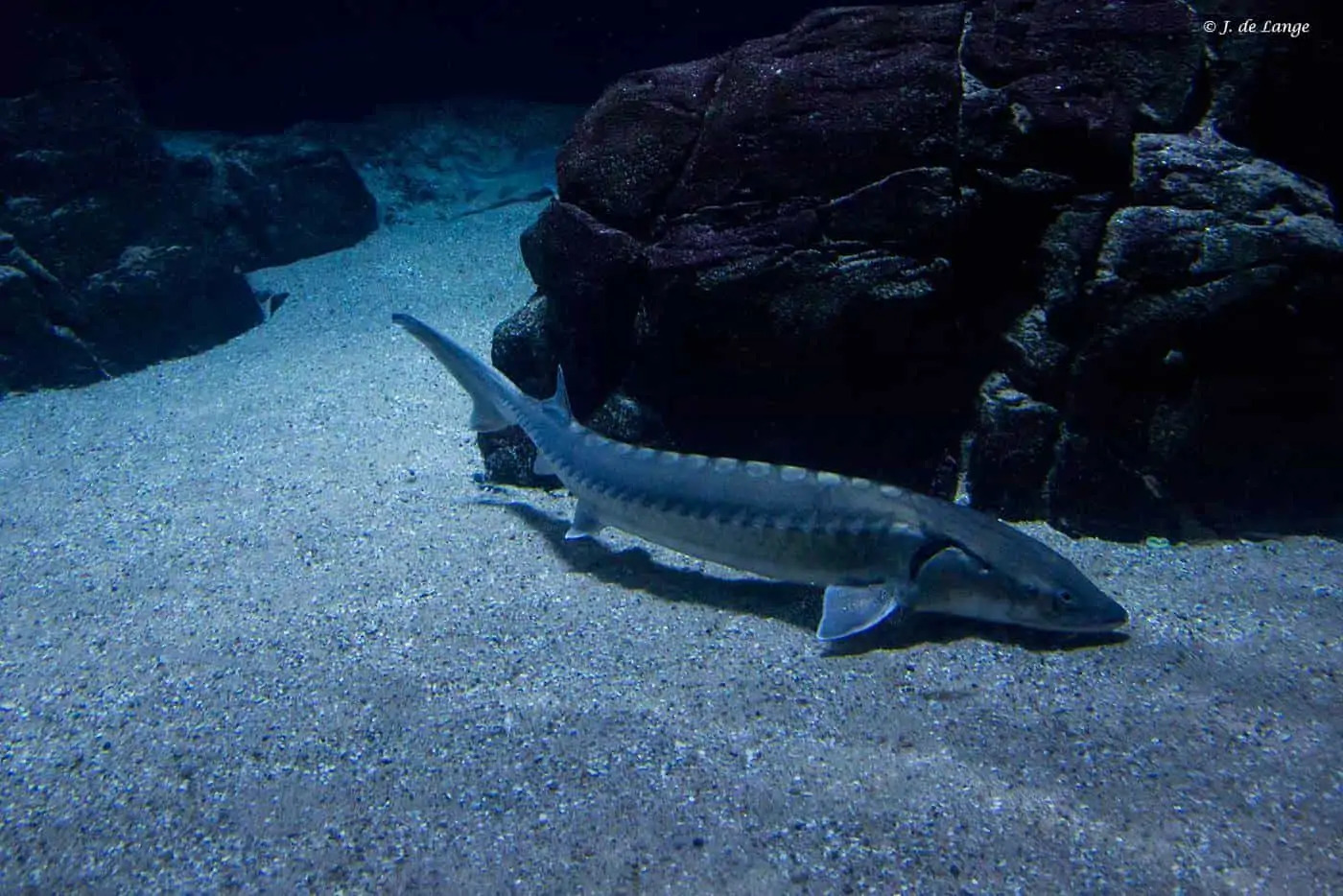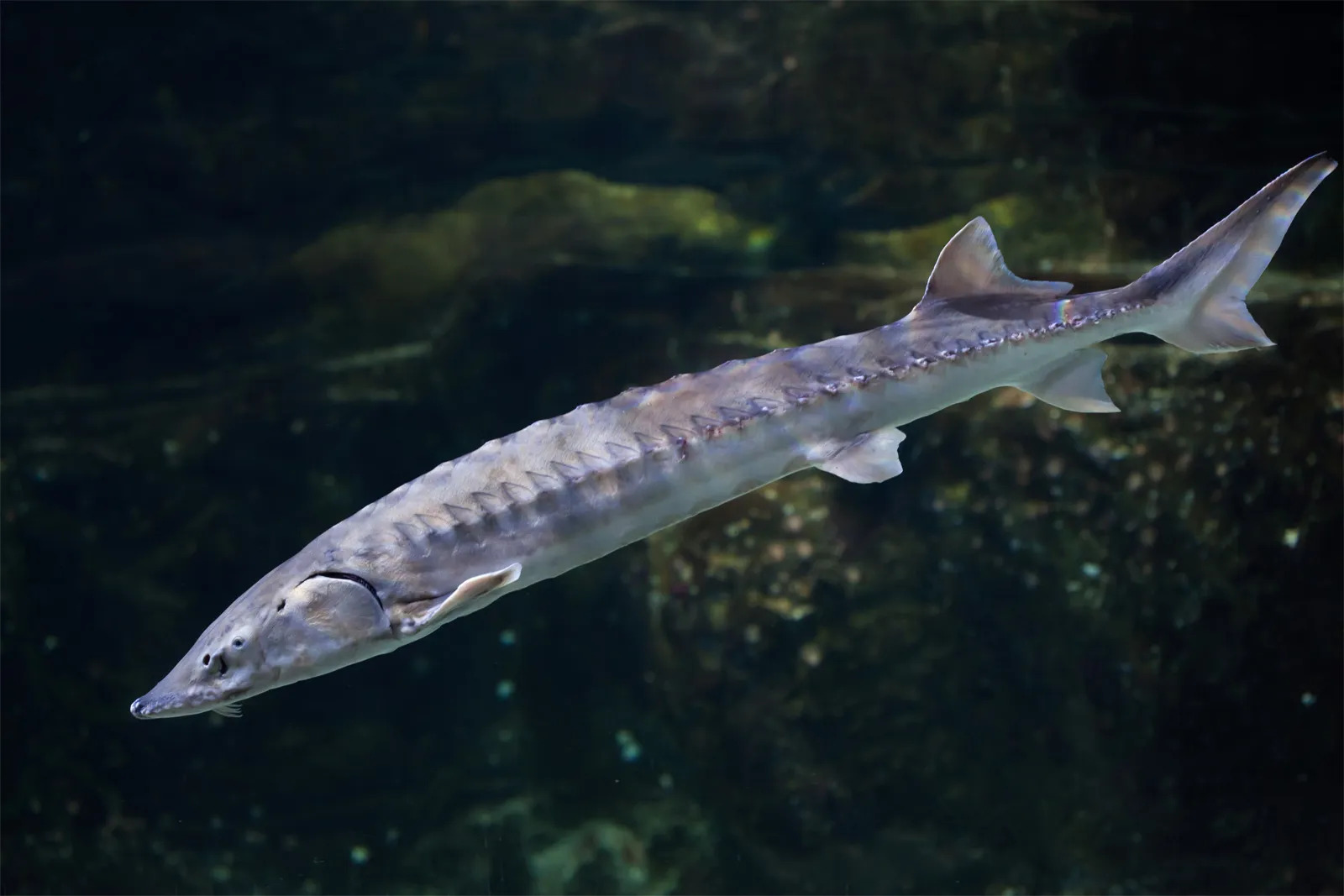Growing to lengths of up to 5 meters and with a potential lifespan of 60 years, the European sturgeon (Acipenser sturio) was a familiar presence in British rivers as recently as the 1950s. However, it has now earned the unfortunate distinction of being one of the IUCN’s critically endangered Red List species.
Sturgeon populations experienced a substantial decline during the 19th century due to factors such as excessive harvesting for meat and caviar, along with infrastructure and agricultural developments impeding their access to vital freshwater spawning habitats.
The anadromous species (found in both fresh and saltwater) is part of an ancient family of fish often referred to as “living fossils” as they have swum Earth’s waters close to their current form for as much as 200 million years – a testament to their remarkable ability to adapt to diverse aquatic environments.
The return of sturgeon to British rivers could catalyse a chain of positive ecological benefits. With the decline of sturgeon populations, some British rivers have experienced an overabundance of certain fish species lower down the food chain. This can lead to imbalances in the ecosystem, as unchecked populations of smaller fish can negatively affect water quality and even impact vegetation growth along riverbanks. By reintroducing sturgeon, a natural apex predator, a more harmonious balance can be restored, preventing the unchecked proliferation of certain species and promoting healthier aquatic environments overall.
Another crucial ecological aspect influenced by sturgeon is nutrient cycling. Sturgeon play an important role in this cycle by consuming prey and releasing waste into the water. This waste is rich in nutrients that can be taken up by aquatic plants and smaller organisms, providing an essential source of sustenance.
Sturgeon also exhibit unique migratory behaviors. These fish are known for their epic journeys between freshwater rivers and the open sea. Reestablishing sturgeon migration routes within British waters can positively impact entire river ecosystems. As sturgeon move between saltwater and freshwater environments, they transport essential nutrients, contributing to the health of both. These migrations can also help to redistribute sediments and detritus, which reshape riverbeds creating more diverse habitats for other aquatic species.
In addition to their ecological contributions, sturgeon can also help stimulate economic benefits for local communities through sustainable fishing. As attributed to their downfall sturgeon are highly valued for their meat and roe, which is processed into caviar. Sustainable harvesting practices could be established to ensure that any fishing activities are conducted in a way that doesn’t harm the sturgeon populations. Furthermore, the presence of sturgeon in British waters could attract tourists interested in witnessing these ancient creatures in their natural habitat.
Successfully reintroducing sturgeon to Britain has a number of obstacles. Efforts should focus on habitat restoration and water quality improvement as pollution and degraded river systems are currently among the biggest challenges.
In the face of adversity and against the backdrop of dwindling sturgeon populations, the story of the European sturgeon carries a message of hope, resilience, and the potential for revival.
While the challenges that led to the decline of sturgeon populations are complex, they are not insurmountable. The ancient lineage of sturgeon, spanning millions of years, attests to their extraordinary adaptability and potential to reestablish themselves across British ecosystems in abundance.

European Sea Sturgeon ( Acipenser sturio )

European Sea Sturgeon Encyclopædia Britannica
